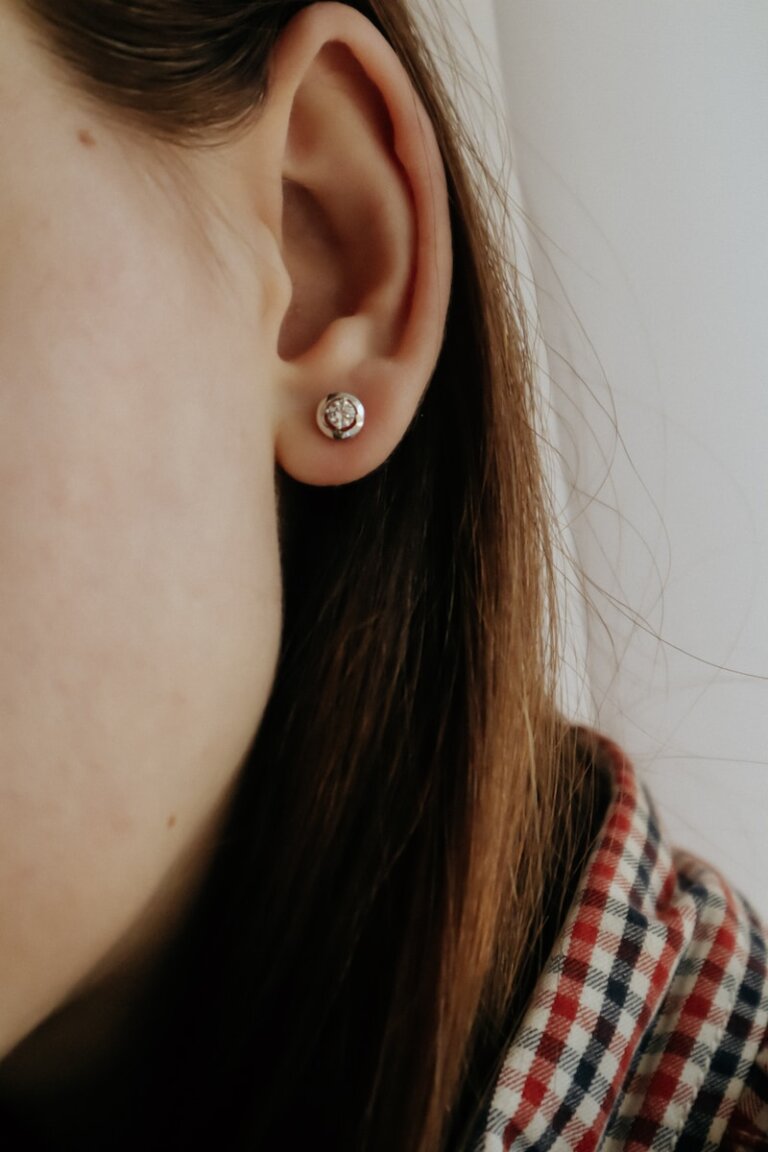When Wax Goes Wrong: Unraveling the Complications of Excessive Ear Wax
Excessive ear wax, medically known as cerumen, is a common problem that affects a significant number of individuals. While ear wax plays a vital role in protecting the ear canal, an excessive buildup can lead to various complications and discomfort. In this comprehensive guide, we will delve into the causes, symptoms, and treatment options for excessive ear wax, providing you with valuable information to overcome this issue.
Understanding Ear Wax
Ear wax, also known as cerumen, is a natural substance produced by the glands in the ear canal. Its main purpose is to lubricate and protect the ear by trapping dust, debris, and foreign particles, preventing them from reaching the delicate structures of the inner ear. In normal circumstances, ear wax gradually moves from the ear canal to the opening of the ear, where it eventually dries up and falls out.
However, sometimes the production of ear wax can go awry, leading to an excessive buildup. This can occur due to various factors, including:
- Narrow Ear Canal: Individuals with a naturally narrow ear canal may be more prone to excessive ear wax buildup due to limited space for the wax to exit. The narrowness of the canal can impede the natural flow of ear wax, causing it to accumulate over time.
- Excessive Hair Growth: Excessive hair growth in the ear canal can hinder the natural movement of ear wax, leading to its accumulation. The hair acts as a barrier, preventing the wax from flowing out of the ear canal.
- Impacted Wax: Sometimes, ear wax can become impacted, meaning it gets tightly packed in the ear canal. This can occur due to improper cleaning methods, such as using cotton buds, which push the wax further inside. The more the wax is pushed in, the greater the chances of it becoming impacted.
- Wax Production Changes: Certain medical conditions, such as eczema, dermatitis, or genetic factors, may cause the glands to produce more wax than usual. These conditions can disrupt the natural balance of ear wax production, leading to an excessive buildup.
Symptoms of Excessive Ear Wax
Excessive ear wax can present a range of symptoms that can vary from mild to severe, depending on the individual. It is important to be aware of these symptoms to identify and address the issue promptly. Common signs of excessive ear wax include:
- Earache: Experiencing persistent or recurring pain in the ear can be a sign of excessive ear wax. The wax buildup can exert pressure on the ear canal, leading to discomfort.
- Hearing Loss: Gradual or sudden reduction in hearing abilities can be a consequence of excessive ear wax. The wax can block the ear canal, preventing sound waves from reaching the eardrum.
- Tinnitus: Tinnitus refers to the perception of ringing, buzzing, or other sounds in the ear. Excessive ear wax can contribute to the development or worsening of tinnitus symptoms.
- Ear Discomfort: Excessive ear wax can cause a feeling of fullness or itchiness in the ear. This discomfort is often a result of the wax blocking the normal airflow in the ear canal.
- Dizziness: Episodes of dizziness or imbalance can be associated with excessive ear wax. The wax buildup can exert pressure on the delicate structures within the ear, affecting the body’s balance system.
If you experience any of these symptoms, it is essential to consult a healthcare professional for a proper diagnosis and treatment plan. They will be able to assess your condition accurately and provide appropriate guidance.
Diagnosis and Treatment Options
When dealing with excessive ear wax, it is important to seek medical advice to ensure a safe and effective course of action. A healthcare professional, such as an audiologist or an Ear, Nose, and Throat (ENT) specialist, can examine your ears and determine the best approach for your specific situation. Some common methods for diagnosing and treating excessive ear wax include:
- Physical Examination: The healthcare professional will visually inspect your ears using an otoscope, a specialised instrument that allows them to view the ear canal and eardrum. This examination helps in assessing the extent of the wax buildup and any associated complications.
- Irrigation: This technique involves gently flushing the ear canal with warm water or a saline solution to soften and remove the wax. It is typically performed using a syringe or specialised irrigation device. The water helps to dislodge the wax, allowing it to flow out of the ear canal naturally. This method carries with it more risks than alternate wax removal methods such as microsuction. Some risks include perforation of the ear drum and infections. Which is why at Hearing First we NEVER use irrigation.
- Microsuction: Is a gentle process that carefully removes the built up wax within the ear canal. This method is particularly useful when the wax is impacted and hard. The suction device allows for precise and controlled removal of the wax. It is suitable for most people of all ages and is safe to be used on ears with a history of perforations.
- Ear Drops: Over-the-counter or prescription ear drops may be recommended to soften the wax and to help break it down, making it easier to remove. Some of these drops often contain substances like hydrogen peroxide or sodium bicarbonate which can cause sensitivities for some people when used. Your healthcare professional will recommend what is best to use. At Hearing First we recommend Earol olive oil.
- Manual Removal: In certain situations, manual removal of the wax may be necessary. This procedure should only be performed by a trained healthcare professional to avoid causing damage to the ear canal or eardrum. Manual removal ensures precise and safe elimination of the excessive ear wax.
It is important to note that attempting to remove ear wax at home using cotton buds or other objects can be dangerous and should be avoided. These methods can push the wax further into the ear canal, potentially causing impaction or injury.
Prevention and Maintenance
Preventing excessive ear wax buildup and its associated complications can be achieved by following simple steps and incorporating good ear hygiene practices into your routine. Here are some preventive measures to consider:
- Avoid Inserting Objects: Refrain from inserting cotton budss, hair grips, or any other objects into the ear canal, as this can push the wax deeper or cause damage. Instead, focus on cleaning the outer ear during your regular bathing routine.
- Ear Hygiene: Gently clean the outer ear with a washcloth during your regular bathing routine. However, avoid inserting anything into the ear canal itself. This helps maintain cleanliness and reduces the chances of excessive wax buildup.
- Wax Softening Drops: If you are prone to excessive wax buildup, using wax softening drops once a week may help prevent the wax from becoming impacted, we recommend Earol. These drops are designed to soften the wax, making it easier for it to naturally flow out of the ear canal.
- Regular Check-ups: Schedule regular check-ups with your healthcare professional to monitor the condition of your ears and address any concerns promptly. Regular examinations allow for early detection of excessive ear wax buildup and timely intervention.
By following these preventive measures and seeking professional care when necessary, you can maintain healthy ears and minimise the risk of complications associated with excessive ear wax.
Conclusion
Excessive ear wax can be an uncomfortable and bothersome condition, impacting hearing abilities and overall ear health. Understanding the causes, symptoms, and treatment options for excessive ear wax is crucial in order to address the issue effectively. Remember, it is always best to consult a healthcare professional for a proper diagnosis and personalised treatment plan. With their guidance, you can ensure your ears remain clean, healthy, and free from the complications of excessive ear wax.
FAQ
Q: What causes excessive ear wax buildup?
A: Excessive ear wax buildup can be caused by factors such as a narrow ear canal, excessive hair growth in the ear canal, impacted wax, and changes in wax production due to medical conditions or genetic factors.
Q: What are the symptoms of excessive ear wax?
A: Symptoms of excessive ear wax include earache, hearing loss, tinnitus, ear discomfort, and dizziness.
Q: How is excessive ear wax diagnosed and treated?
A: Excessive ear wax can be diagnosed through a physical examination using an otoscope. Treatment options include irrigation, suction, ear drops, and manual removal performed by a healthcare professional.
Q: How can I prevent excessive ear wax buildup?
A: To prevent excessive ear wax buildup, avoid inserting objects into the ear canal, practice good ear hygiene by cleaning the outer ear with a washcloth, use wax softening drops once a week, and schedule regular check-ups with a healthcare professional.







